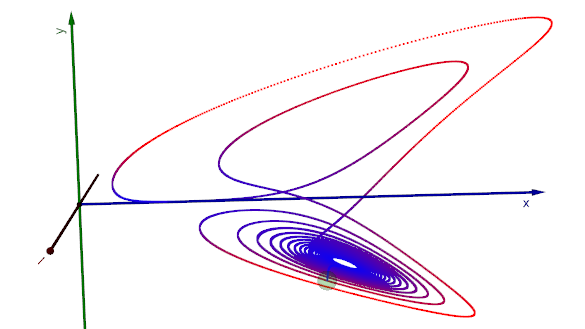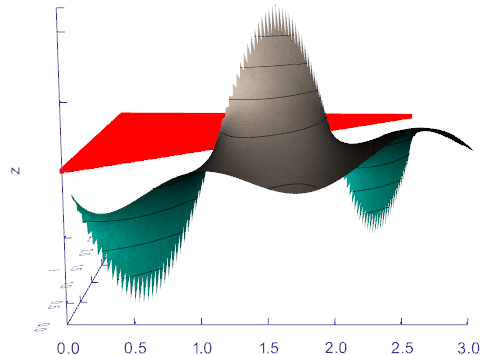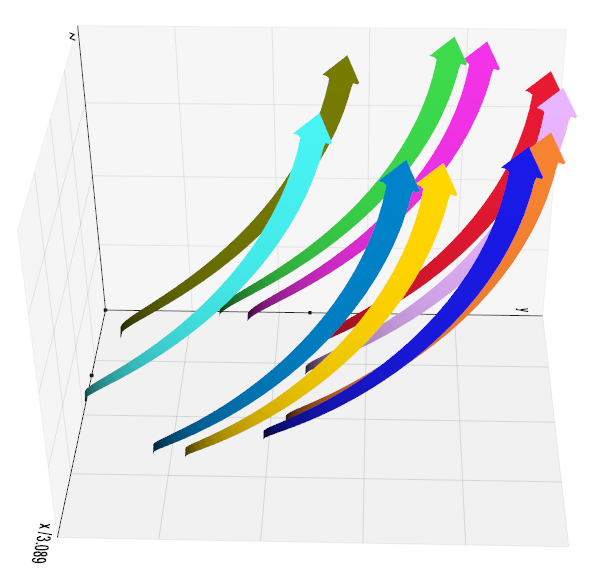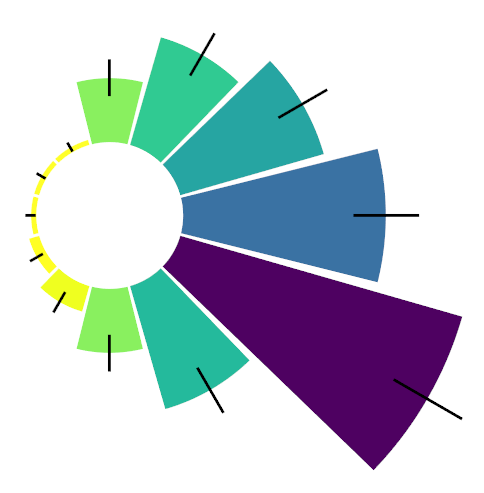A lightweight pure python module for scientific analysis and visualization of 3D objects
and point clouds based on VTK and numpy.
(click on the picture to open a 3D viewer)
Inspired by the vpython manifesto "3D programming for ordinary mortals", vtkplotter makes it easy to work wth three-dimensional objects, create displays and animations in just a few lines of code, even for those with less programming experience.
Use pip to install:
pip install -U vtkplotteror use conda to install from the conda-forge channel:
conda install -c conda-forge vtkplotteror on Ubuntu OS:
sudo apt install python3-vtkplotterWindows-10 users can place this file vtkplotter.bat on the desktop to drag&drop files to visualize. (Need to edit the path of the local python installation).
Automatically generated documentation can be found here.
📌 Need help? Have any question, or wish to suggest or ask for a missing feature? Do not hesitate to open a issue or send an email.
Intuitive and straightforward API which can be combined with VTK seamlessly in a program, whilst mantaining access to the full range of VTK native classes.
It includes a large set of working examples for a wide range of functionalities:
working with polygonal meshes and point clouds *[click triangle to expand]*
- Import meshes from VTK format, STL, Wavefront OBJ, 3DS, Dolfin-XML, Neutral, GMSH, OFF, PCD (PointCloud),
- Export meshes as ASCII or binary to VTK, STL, OBJ, PLY ... formats.
- Analysis tools like Moving Least Squares, mesh morphing and more..
- Tools to visualize and edit meshes (cutting a mesh with another mesh, slicing, normalizing, moving vertex positions, etc..).
- Split mesh based on surface connectivity. Extract the largest connected area.
- Calculate areas, volumes, center of mass, average sizes etc.
- Calculate vertex and face normals, curvatures, feature edges. Fill mesh holes.
- Subdivide faces of a mesh, increasing the number of vertex points. Mesh simplification.
- Coloring and thresholding of meshes based on associated scalar or vectorial data.
- Point-surface operations: find nearest points, determine if a point lies inside or outside of a mesh.
- Create primitive shapes: spheres, arrows, cubes, torus, ellipsoids...
- Generate glyphs (associate a mesh to every vertex of a source mesh).
- Create animations easily by just setting the position of the displayed objects in the 3D scene. Add trailing lines and shadows to moving objects is supported.
- Straightforward support for multiple sync-ed or independent renderers in the same window.
- Registration (alignment) of meshes with different techniques.
- Mesh smoothing.
- Delaunay triangulation in 2D and 3D.
- Generate meshes by joining nearby lines in space.
- Find the closest path from one point to another, travelling along the edges of a mesh.
- Find the intersection of a mesh with lines, planes or other meshes.
- Interpolate scalar and vectorial fields with Radial Basis Functions and Thin Plate Splines.
- Add sliders and buttons to interact with the scene and the individual objects.
- Visualization of tensors.
- Analysis of Point Clouds:
- Moving Least Squares smoothing of 2D, 3D and 4D clouds
- Fit lines, planes, spheres and ellipses in space
- Identify outliers in a distribution of points
- Decimate a cloud to a uniform distribution.
working with volumetric data, and tetrahedral meshes
- Import data from VTK format volumetric TIFF stacks, DICOM, SLC, MHD and more
- Import 2D images as PNG, JPEG, BMP
- Isosurfacing of volumes
- Composite and maximum projection volumetric rendering
- Generate volumetric signed-distance data from an input surface mesh
- Probe a volume with lines and planes
- Generate stream-lines and stream-tubes from vectorial fields
- Slice and crop volumes
- Support for other volumetric structures (structured and grid data)
plotting and histogramming
- Fully customizable axis styles
- 'donut' plots and pie charts
- Scatter plots in 2D and 3D
- Surface function plotting
- 1D customizable histograms
- 2D hexagonal histograms
- Polar plots, spherical plots and histogramming
- Draw latex-formatted formulas in the rendering window.
- Quiver plots
- Stream line plots
- Point markers analogous to matplotlib
Moreover:
- Integration with the Qt5 framework.
- Examples using SHTools package for spherical harmonics expansion of a mesh shape.
- Support for FEniCS/Dolfin platform for visualization of finite-element calculations.
- Interoperability with the trimesh library.
- Export a 3D scene and embed it into a web page.
- Embed the 3D rendering in a jupyter notebook with K3D (can export an interactive 3D-snapshot page here).
Visualize a polygonal mesh from a terminal window with:
vtkplotter mesh.obj
# valid formats: [vtk,vtu,vts,vtp,vtm,ply,obj,stl,3ds,dolfin-xml,neutral,gmsh,
# pcd,xyz,txt,byu,tif,off,slc,vti,mhd,dcm,dem,nrrd,nii,bmp,png,jpg]Volumetric files (mhd, vti, slc, tiff, DICOM etc..) can be visualized with options:
Slice a volume in the 3 planes:vtkplotter --slicer embryo.slc |
Ray-casting rendering:-g embryo.slc |
2D slice:--slicer2d |
Colorize voxels:--lego |
|---|---|---|---|
 |
 |
 |
 |
To visualize multiple files or files time-sequences try -n or -s options. Use -h for the complete list of options.
More than 300 working examples can be found in directories (scroll down to see thumbnails):
examples/basic
examples/advanced
examples/volumetric
examples/tetmesh
examples/simulations
examples/pyplot
examples/other
examples/other/dolfin
examples/other/trimesh
examples/notebooks
Apply a Moving Least Squares algorithm to obtain a smooth surface from a to a large cloud of scattered points in space (script) |
 Create a simple 3D animation in exactly 10 lines of code (script). Trails and shadows can be added to moving objects easily. |
Simulation of a gyroscope hanging from a spring (script). |
 Quantum-tunnelling effect integrating the Schroedinger equation with 4th order Runge-Kutta method. The animation shows the evolution of a particle in a box hitting a sinusoidal potential barrier. (script) |
Turing system of reaction-diffusion between two molecules (script)  |
 Support for the FEniCS/Dolfin platform for visualization of PDE and finite element solutions (see here) |
Run any of the built-in examples from command line, e.g.:
vtkplotter -ir covid19
-
M. Musy, G. Dalmasso, J. Sharpe and N. Sime, "
vtkplotter: plotting in FEniCS with python", (link). Poster at the FEniCS'2019 Conference, Carnegie Institution for Science Department of Terrestrial Magnetism, Washington DC, June 2019. -
G. Dalmasso, "Evolution in space and time of 3D volumetric images". Talk at the Conference for Image-based Modeling and Simulation of Morphogenesis. Max Planck Institute for the Physics of Complex Systems, Dresden, Germany, March 2019.
Scientific publications using vtkplotter so far:
- X. Diego et al.: "Key features of Turing systems are determined purely by network topology", Physical Review X, 20 June 2018.
- M. Musy, K. Flaherty et al.: "A Quantitative Method for Staging Mouse Limb Embryos based on Limb Morphometry", Development, 5 April 2018, doi: 10.1242/dev.154856.
- G. Dalmasso et al., "Evolution in space and time of 3D volumetric images", in preparation.
- F. Claudi, A. L. Tyson, T. Branco, "Brainrender. A python based software for visualisation of neuroanatomical and morphological data." bioRxiv 2020.02.23.961748; doi: https://doi.org/10.1101/2020.02.23.961748
Have you found this software useful for your research? Please cite it as:
M. Musy et al.
"vtkplotter, a python module for scientific visualization and analysis of 3D objects
and point clouds based on VTK (Visualization Toolkit)",
Zenodo, 10 February 2019, doi: 10.5281/zenodo.2561402.




























































